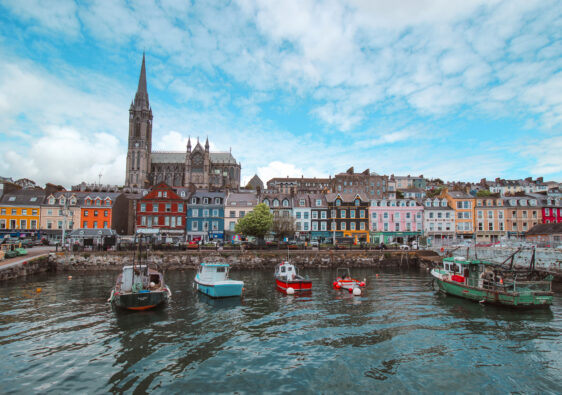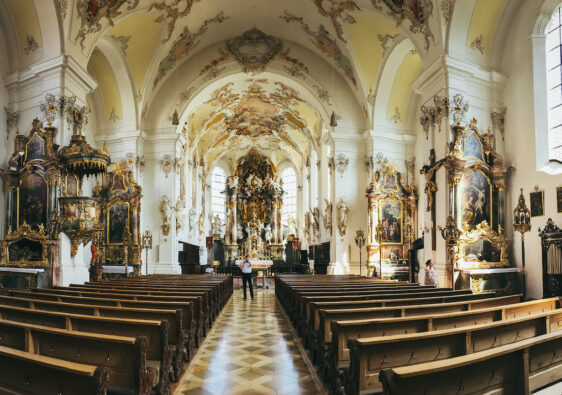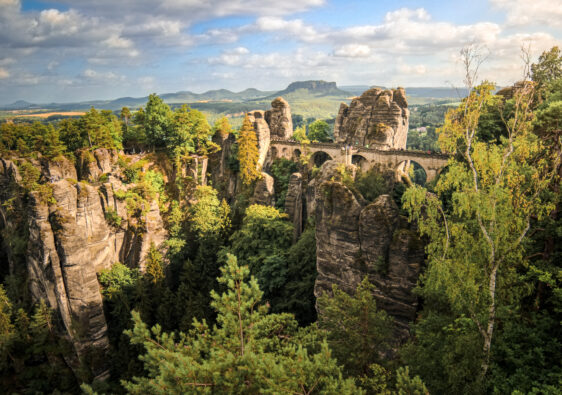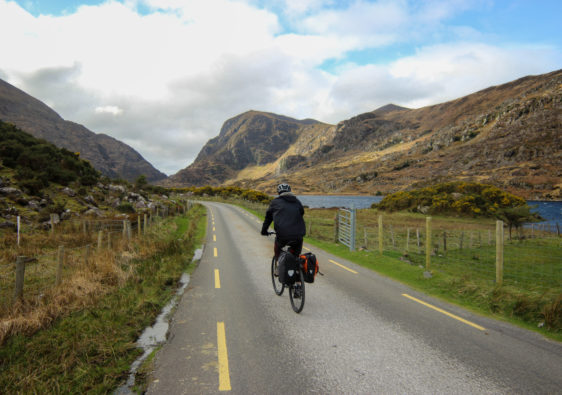Berlin and its surrounds are undeniably, an absolute paradise for people who love outdoor adventure but hate to sweat. Why? Because it is extremely flat. The highest point in Brandenburg is 201 metres, whereas the highest point in Mecklenburg-Vorpommern (the northern neighbouring state) is 179.2 meters. That’s a speed bump in geographical terms.
The surrounding flatness makes cycle tours a very realistic weekend break option, for beginners and seasoned cyclists alike. Perhaps one of the more famous routes is the Berlin-Usedom Radweg (cycle route). The good news is, this cycle route is entirely achievable using a rusty city bike.
The official route runs is about 337 km long. It starts in Berlin, winding through forests, along lakes, and villages, before ending officially at Ahlbeck, Usedom Island. It takes a moderately fit (or stubborn) person about 4 to 5 days of steady cycling to complete.
If you’re a local to Berlin, you can happily skip the first bit, and take the S-Bahn out to Bernau the way we did. As we were cramming this tour in over the 4-day Easter weekend, we planned the cycle trip for 3 days.

Berlin to Usedom Cycle Overview
- Location: Northeast Germany (Brandenburg / Mecklenburg-Vorpommern)
- Length: 267 km
- Elevation gain: +1050m
- Elevation loss: -1110m
- Time: 3 days
- Best time to go: early May to early October
- Sleeping: Camping or Hotels
- Start: Berlin
- Finish: Usedom
- Difficulty: Long days, but thankfully quite flat
Day 1: Bernau (Berlin) to Prenzlau
Day 1
- Length: 106 km
- Elevation gain: +540m
- Elevation loss: -580m
- Time: 6-8 hours (no breaks)
- Shade factor: Lots of forest cover
- Map Link: Komoot Map
We started this day early, at about 10am from the S-Bahn station in Bernau. (That’s the furthest you can get by S-Bahn into the Berlin-Usedom Radweg.)
While the day is long, it is quite pretty. There are a number of forests punctuated by cute, old villages, and for the most part, the cycle route is on its own dedicated path. There are a few places where the trail gets close to a lake (on a hot day, I’m sure you could go for a swim). Since food and drink options are limited along the way, it doesn’t hurt to plan ahead with plenty of water, snacks and a packed lunch.
Accommodation options are limited along the way. We ended up camping at Campingplatz Sonnenkap just outside Prenzlau. Quite a few cyclists did this. There are options there to book a basic cottage if you didn’t want to tent. By German standards, the campsite is very good. There aren’t any permanent residents. There’s a small cafe, ample clean restrooms, and hot showers are included. We paid €22 for the night (two people in a tent). We didn’t pay for electricity – if needed you can charge your phone in the bathrooms.
Day 2: Prenzlau to Ueckermünde
Day 2
- Length: 76 km
- Elevation gain: +230m
- Elevation loss: -260m
- Time: 5 hours (no breaks)
- Shade factor: Intermittent forest shade
- Map Link: Komoot Map
I’m not going to lie – this day was a snooze fest for the most part. It also didn’t help that the weather was the classic North German grey, with a drizzle of gloom. If you want a day off, rather take the train from Prenzlau to Ueckermünde or get off earlier at Pasewalk and cycle the last bit.
The day felt fairly tedious. Maybe it was the kilometres of track along military zones in the forest. Maybe it was the concrete slabs that jolted my pelvis every half second. Or maybe it was just because I was tired from the 100km+ from the day before. In any case, it wasn’t a route I’d do again.

Ueckermünde, on the other hand, was adorable. It’s small, but it has little shops and plenty of restaurants options – especially fresh fish. While there are a few accommodation options in the town, we chose to camp again, this time at Ostsee-Camping Oderhaff. I don’t particularly recommend the campsite for longer than a night. It was €25 a night, with hot showers included in the price, but it’s very crowded feeling. That said, I liked that the tent area was near the beach access gates.
Day 3: Ueckermünde to Heringsdorf
Day 3
- Length: 85 km
- Elevation gain: +280m
- Elevation loss: -280m
- Time: 5 hours (no breaks)
- Shade factor: Mostly exposed
- Map Link: Komoot Map

Of all the days, this was the most interesting. I highly suggest getting an early start so that you arrive at the beach in the early afternoon so you can explore Usedom. Technically, you can cut a lot of the ride out using one of the ferries from Ueckermünde to Kamminke, Usedom. But that would be boring.
The landscape today is very varied. You start off going through farmland, but then you’ll be in a marshy area with lots of sea birds and reeds everywhere. The route passes through Anklam where you can stock up on snacks and take a break in the main square before the last half of the ride on the island of Usedom. There’s a lot of headwind, so be prepared to battle a bit.
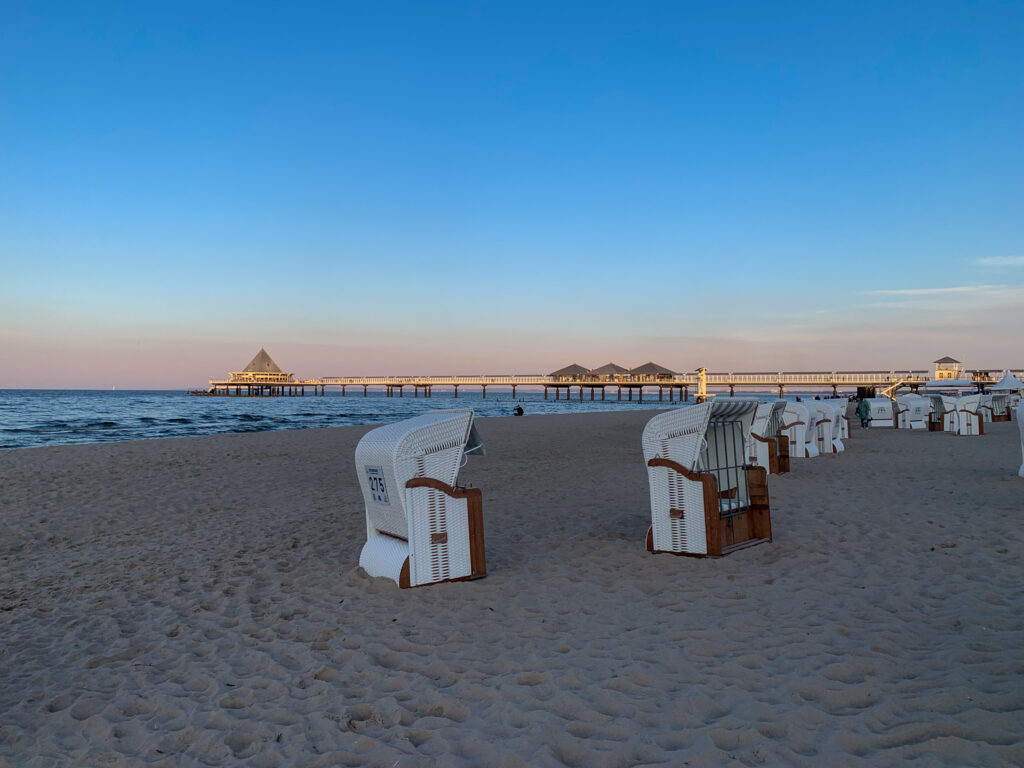
The final stretch of the route passes through a hilly forest area that runs adjacent to the Polish border. It’s probably the only time you will need to dismount and push your bike up the hill. From here the route will take you to Ahlbech where the Berlin-Usedom Radweg officially ends. As we booked a hotel in Heringsdorf, we cycled a few extra kilometres along the promenade to Heringsdorf.
We stayed at Hotel Fortuna which was the perfect balance of price, comfort, and proximity to the beach. From Heringsdorf you can easily walk to many restaurants and shops. Since the beach resort towns are very popular, book your accommodation in advance.
Alternatively, if you prefer to camp, there are numerous campsites up north on the island (e.g. Ostsee-Camping Bansin).
Day 4: Heringsdorf to Zinnowitz
Getting back to Berlin is a bit of a nightmare. Be warned. If you can avoid it, I’d highly recommend making the train trip back on a weekday and not a public holiday like us. Bringing a bike on a German train is probably the riskiest thing you’ll ever have attempted in your life. (A few stops into the journey, our train to Berlin was so packed to the rim that it stopped letting people on – with a bike or without a bike.)
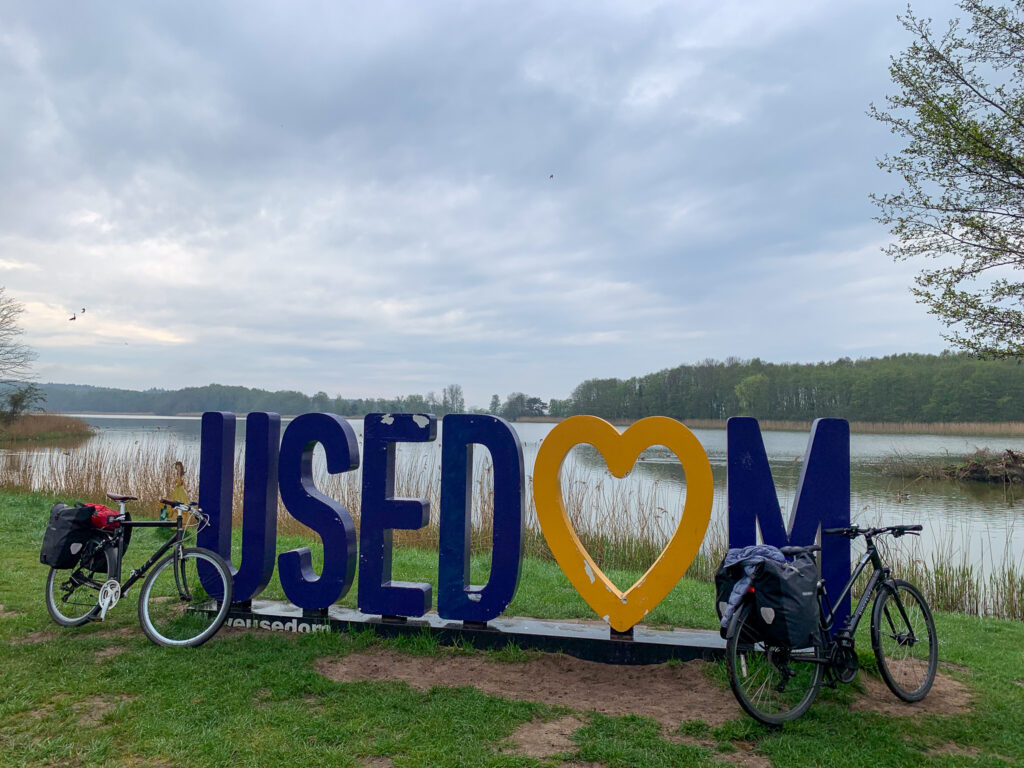
You can either cycle via a very scenic forest path along the coast to the train station in Zinnowitz like we did, or cheat and take a train to Zinnowitz.
Getting back to Berlin by train with a bike takes about 5 hours. First, take the RB23 to Züssow. Then transfer to the RE10 to Stralsund Hauptbahnhof. Then transfer to the RE5 towards Berlin Südkreuz. There are other options to get to Berlin by train, but given the crowdness onboard, your chances of squeezing a bike onboard are very slim if you don’t catch the train at its starting station. If you are going on an unpopular weekday, you can probably catch the RE3 from Züssow without too much trauma.
If you have a valid Deutschland ticket, then you only need to get the ticket for the bicycle.
Happy Cycling!
